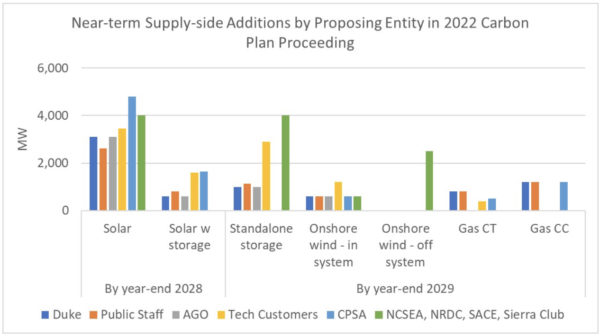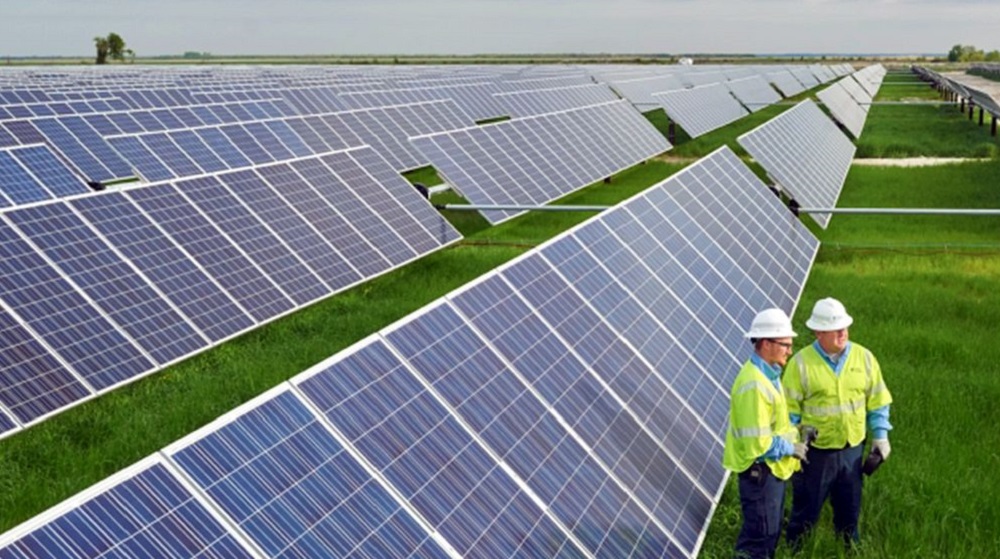With North Carolina generating 9% of its electricity from solar, utility Duke Energy and other key parties in the state’s carbon plan proceeding called for deploying at least 3 GW of solar in the state this decade.
Beyond that agreed-upon amount of solar, Duke Energy proposed new natural gas power facilities.
The sustainable energy trade group NCSEA and clean energy group SACE favored an alternative plan that would meet the state’s near-term electricity needs with more solar and storage, plus energy efficiency and demand response, without new fossil generation. Technology firms Apple, Google and Meta also proposed more solar and storage than Duke Energy. Those two plans are shown with green and yellow lines in the SACE graphic below, compared with Duke’s plan shown in dark blue.

Shortly after the deadline for consideration in the 2022 carbon plan, a joint study by the National Renewable Energy Laboratory (NREL) and Duke Energy was released, showing how North Carolina’s electricity needs could be met by carbon-free resources.
In issuing North Carolina’s first carbon plan order, state regulators said it was “reasonable” for the investor-owned utility to plan new gas units totaling up to 2 GW by 2029.
The carbon plan shows added amounts of solar, storage and gas capacity through 2030 that track “very closely” to the amounts in Duke’s proposal, said SACE Research Director Maggie Shober. As for wind power, regulators made no recommendation, instead calling for further study. Regulators did not make any statement about resources beyond 2030.
Regulators “appear to favor the possibility of new gas if Duke takes the next steps to propose it,” Shober said.
The next carbon plan process will start this September and will be influenced by the Inflation Reduction Act, Shober said. That act provides incentives for solar, wind and storage, and the carbon plan order, she said, directs Duke to “pursue every opportunity that may arise through tax incentives or federal funding to benefit its customers.”
Interconnection
The carbon plan order also directs Duke Energy to construct 14 transmission upgrade projects to facilitate interconnection of solar in an area across parts of North and South Carolina known as a “red zone,” where the needed transmission upgrades are too expensive for any single generation project, Shober said.
The order adds that Duke shall update and improve its local transmission planning process, including by increasing transparency and coordination.
Coal units
This content is protected by copyright and may not be reused. If you want to cooperate with us and would like to reuse some of our content, please contact: editors@pv-magazine.com.








Nothing suspicious about this at all. Nothing to see here. Y’all move along now, y’hear?
The only way to be carbon free is to install off-grid rooftop solar and batteries and not bother with a grid connection on the system. Buy only what you need from Duke and let them ponder where all the residential customers went.